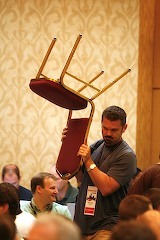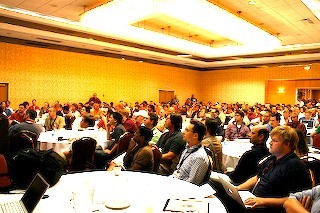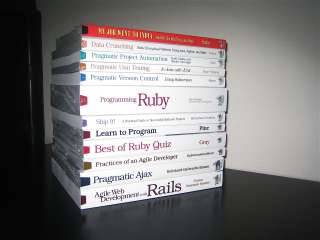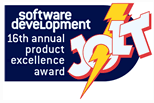I gave what turned out to be a slightly controversial keynote at RailsConf. In it, I pointed out that people (like me) who can use Rails on green-field projects are incredibly privileged. We get to code using cool technologies in an incredibly agile, reactive environment, producing applications that just work.
But, at the same time, there are a whole lot of people who don’t get to enjoy the world of Rails.
I see these people regularly: I talk at No Fluff symposia around the country, a great set of shows aimed at Java developers. I’m the outsider, normally giving a full day’s worth of talks on Ruby and Rails. And, in a way, it makes me sad to do it, because I often see folks get really excited about the possibilities present in Rails only then to realize that they’ll be going back to work on Monday with no real hope of using what they’d just seen. These folks come to me during the breaks and talk about how bad their world currently is, and how much better it would be if only they could use Rails. If only…
Sometimes, the things that block these people are not technical issues: companies have policies dictating that all work is done in Java (or .NET, or whatever). But many times the road blocks are technical. In their particular environment, with legacy code and legacy databases, they need to be able to do things that Rails just doesn’t support out of the box—more complex schemas, staged deployment, and so on.
So, in my keynote, I asked a simple question. Can we, as a community, do anything to make the lives of these developers easier. Can we find a way of bringing them in out of the cold?
Clearly, I believe the answer is yes. As I said in Chicago, the answer is not to change Rails. Instead, the answer is to use the fact that Rails is based on Ruby, and Ruby gives developers incredible power to extend existing code in directions not anticipated by the original developers. I asked the community to consider creating extensions to Rails to allow currently disenfranchised developers to join the party.
This seems to have touched people’s nerves. Some have reacted violently against the idea, others have welcomed it. It’s an interesting, although ultimately sterile, debate. If people need changes to Rails, Ruby will let them do it.
An interesting example is Greg Houston’s recent blog post, Let ActiveRecord support Enterprise Databases. (Uh oh! He used the enterprise word). He describes a problem he faces trying to use Active Record migrations to maintain a legacy schema. The database-neutral migrations didn’t give him the kind of control he needed, so his post describes how he extended Active Record to do what he wants (including a very simple but nicely powerful trick to make migrations spit out SQL, rather than execute it). And, importantly, he did all this as a regular user of Rails: he didn’t need any changes to the framework or any endorsement of his work by the core team. (He does, however, make a good point at the end of his post. If Active Record had an extension API it would make it easier for these kinds of plugins to survive changes to the core code base.)
Greg’s post is a basic experience report: he took what he needed from Rails, extended it where necessary, and solved a business problem. By blogging, he’s shown other developers just how to solve this category of problem. A .NET developer needing to manage a legacy SqlServer schema could read his post and realize that something that seemed impossible in Rails is actually fairly easy. One more person can join the party.
You could argue that the stuff in Greg’s post is just a simple matter of coding. There’s nothing stopping any .NET developer downloading Rails and making the simple changes he’s suggesting.
But the reality is that you have to have a good idea that this kind of thing is possible before you invest time in the exercise. If you’re a Java or .NET developer looking for salvation, and you spend some time looking at Rails, you’ll currently come across a lot of information explicitly telling you that Rails is never going to address the issues you face—Rails is explicitly not ”enterprise.” And so you’d move on. And you’d be missing an incredible opportunity.
And this is one of the challenges I’d like us, the Rails and Ruby communities, to address. While keeping the Rails core focused on new ways of writing web applications, I’d like others of us to find ways of educating corporate software developers, showing them that they can also bring our technologies into their daily lives—using Ruby as an enterprise glue language and Rails as a viable enterprise web development platform.
Should Rails be everything to everyone?
No.
Should Rails be “marketed” as a replacement for J2EE or .NET?
God forbid.
But there are a whole group of people out there who could be using Rails now but aren’t, simply because they don’t know that it is up to their challenges. And I’d like to try to help these folks.
Let’s not be the only people having fun.





